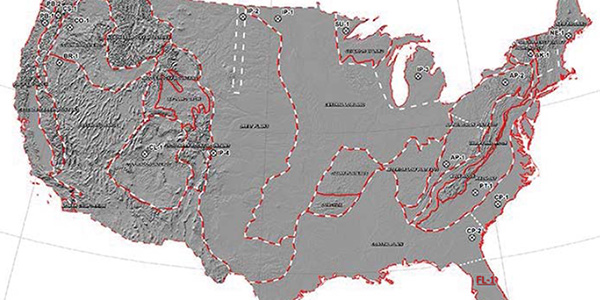By Holden Mann
NERC opened a final ballot Wednesday on a proposal requiring entities that fail to meet performance requirements for “supplemental” geomagnetic disturbances (GMD) to develop corrective action plans (CAP) to minimize their vulnerability.
Voting will be open until 8 p.m. E.T. Nov. 22 on reliability standard TPL-007-4 (Transmission System Planned Performance for Geomagnetic Disturbance Events), which was prompted by FERC Order 851. In addition to requiring CAPs, FERC ordered NERC to authorize extensions of CAP deadlines on a case-by-case basis. (See Revised NERC GMD Standard Approved.)
GMDs, which occur when charged particles ejected from the sun cause changes in Earth’s magnetic fields, can cause voltage instability or collapse, damaging electrical equipment.
NERC’s original GMD standard required applicable entities to assess the vulnerability of their transmission systems to a “benchmark” GMD event, defined as a one-in-100-year event that would cause an 8-V/km “reference peak geoelectric field amplitude” at 60 degrees north geomagnetic latitude using Quebec’s ground conductivity. The standard applies to planning coordinators, transmission planners, transmission owners and generation owners connected at 200 kV or higher.
“Supplemental” GMD events refer to localized “spikes” of intense and damaging magnetic fields that can be created during an event that appears less severe based on spatially averaged measurements over a large area.
The standard opened for comment is virtually identical to the draft that received a 71% affirmative vote, clearing the 67% threshold, in a 45-day ballot period that closed Sept. 9. Organizations that voted in that round will see their votes carried over to the final ballot unless they choose otherwise.
The only change since the initial ballot is language specifying the “Compliance Enforcement Authority” (CEA) — NERC or the regional entity in the U.S. and any entity designated by Canadian officials — will handle requests for extensions. The original version said extensions would be subject to the “ERO.”
TPL-007-4 was created by an 11-member standard drafting team with input from industry and compliance leadership from each regional entity.
Deadlines
The standard requires completion of a CAP within a year after completion of a supplemental GMD vulnerability assessment that concludes the entity does not meet performance requirements. It lists as potential corrective measures the installation, modification or removal of transmission or generation facilities; operating procedures, protection systems or remedial action schemes and demand-side management. Hardware mitigation must be completed within four years after completion of the CAP, with non-hardware measures due within two years.
Under NERC’s CAP Extension Request Review Process, extension requests must be submitted no later than 60 days before the completion date specified in the CAP. The CEA is to convey its decision within 45 days after that.
Extensions will be granted only when implementation has been prevented for reasons outside the control of the responsible entity, such as delays resulting from permitting, equipment lead times or stakeholder processes required by tariff.
“If it was due to a lapse of planning properly or missing a date inadvertently, that’s not beyond the control of the responsible entity,” Steven Noess, NERC director of regulatory programs, said during a webinar Tuesday. “But there might be delays that are [due to] permitting, regulatory processes … [changes in] tariffs or lead times … specific equipment, right of way questions, things of that nature, [and we] certainly want to make it easy for folks to identify them.”
Flexibility Assured
In addition to clarifying the extension process, the standard drafting team also attempted to address industry questions about the level of rigidity in the Implementation Guidance for TPL-007-4 regarding specific mitigation measures. Several of the commenters on the first ballot asked for reassurance the revisions would permit utilities the flexibility to devise their own strategies.
PJM’s Emanuel Bernabeu, who chaired the standard drafting team, emphasized the recommendations in the implementation guidelines are for guidance only. While the team wanted to provide an example of a workable solution, any measure that achieves the goal and is in line with the current scientific understanding may be approved.
“Substantively [it] is the same information we had before, [but] we’ve tried to clarify the language so it’s absolutely clear that this is only [one] acceptable approach, and there are actually other approaches [to] the supplemental events that would be valued,” said Bernabeu.
The NERC Board of Trustees is expected to approve the standard in February 2020.


